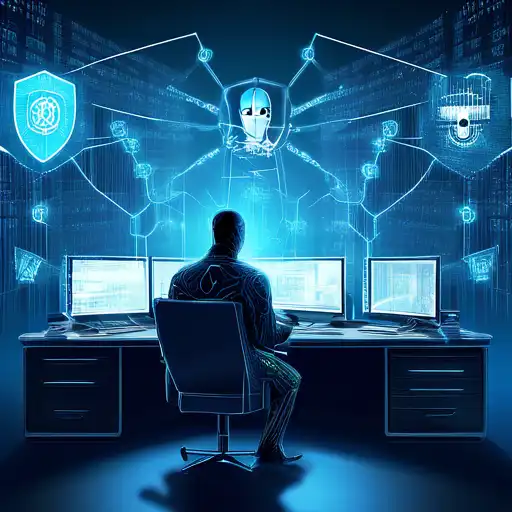Introduction to Cybersecurity in 2023
As we step into 2023, the digital landscape continues to evolve, bringing with it a new set of cybersecurity threats. Businesses and individuals alike must stay informed about these emerging risks to protect their sensitive data and maintain privacy. This article delves into the top cybersecurity threats to watch in 2023, offering insights and strategies to mitigate these risks.
1. Ransomware Attacks on the Rise
Ransomware remains a significant threat, with attackers becoming more sophisticated in their methods. In 2023, we can expect to see an increase in ransomware attacks targeting not just large corporations but also small businesses and individuals. Protecting against these attacks requires robust backup solutions and employee education on phishing scams.
2. Phishing Scams Get More Personal
Phishing scams are evolving, with attackers using personal information to craft more convincing messages. These scams often lead to identity theft or financial loss. To combat this, it's essential to verify the authenticity of emails and messages and to use advanced email filtering solutions.
3. The Threat of Deepfake Technology
Deepfake technology is becoming more accessible, leading to its misuse in creating convincing fake audio and video content. This poses a significant threat to personal and corporate reputations. Awareness and verification tools are key to identifying and mitigating the risks associated with deepfakes.
4. IoT Devices as Entry Points
The proliferation of IoT devices has expanded the attack surface for cybercriminals. Many of these devices lack robust security features, making them easy targets. Securing IoT devices involves changing default passwords and regularly updating firmware to patch vulnerabilities.
5. Cloud Security Challenges
As more organizations migrate to the cloud, security challenges emerge. Misconfigured cloud settings and inadequate access controls can lead to data breaches. Implementing strong encryption and access management policies is crucial for cloud security.
6. Supply Chain Attacks
Supply chain attacks, where attackers target less secure elements in the supply chain to compromise larger organizations, are expected to increase in 2023. Conducting thorough security assessments of all partners and vendors is essential to prevent these attacks.
7. AI-Powered Cyber Attacks
Cybercriminals are beginning to leverage AI to automate attacks and evade detection. This includes everything from automated phishing campaigns to malware that adapts to avoid security measures. Staying ahead of these threats requires AI-driven security solutions that can predict and neutralize attacks before they occur.
Conclusion: Staying Ahead of Cybersecurity Threats
The cybersecurity landscape in 2023 is fraught with evolving threats that require vigilance and proactive measures. By understanding these risks and implementing comprehensive security strategies, individuals and organizations can protect themselves against potential cyber attacks. Remember, cybersecurity is not just about technology; it's also about awareness and education.
For more insights on protecting your digital assets, explore our guide on cybersecurity basics and stay informed about the latest in digital security.
